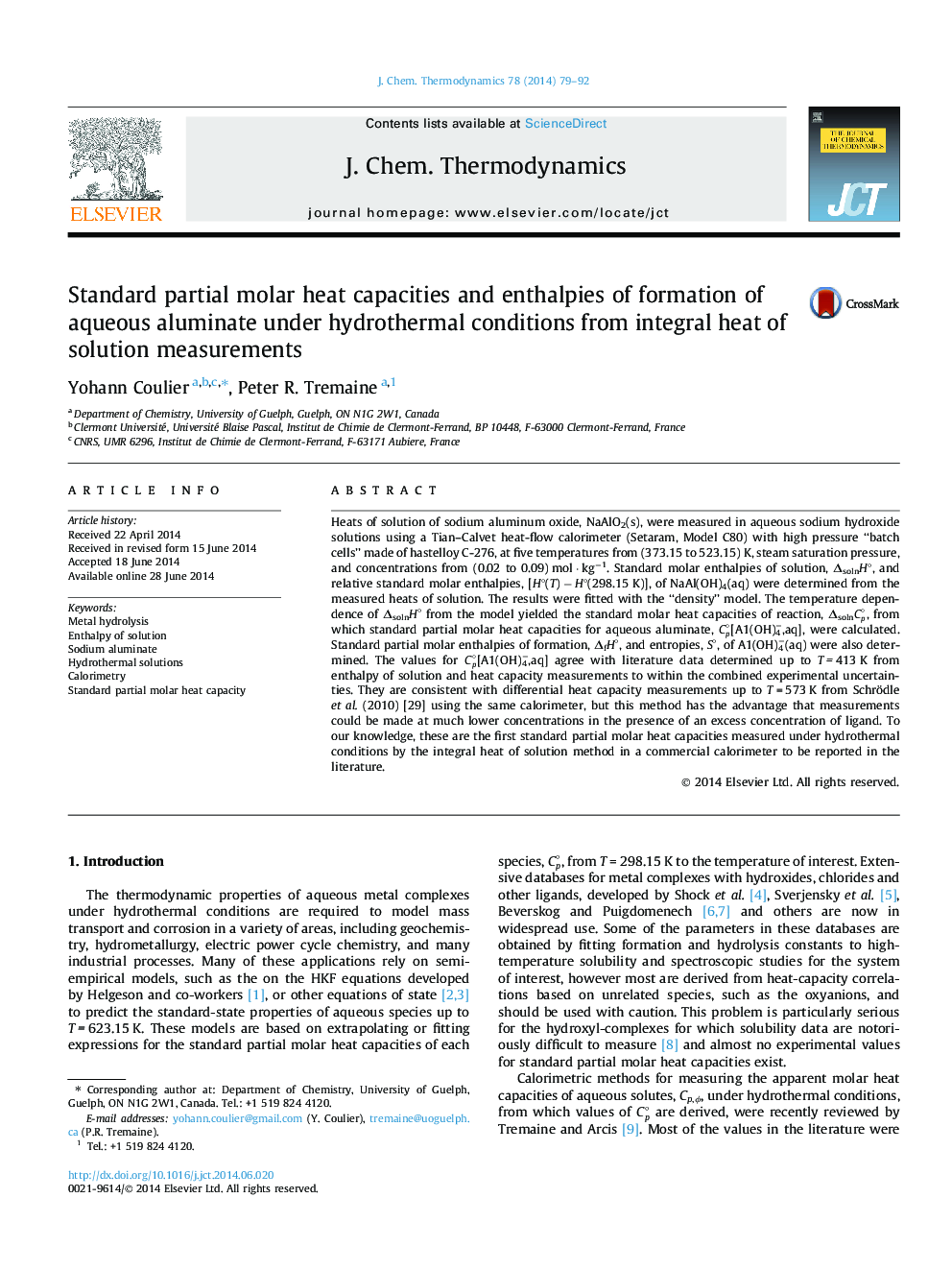| Article ID | Journal | Published Year | Pages | File Type |
|---|---|---|---|---|
| 215362 | The Journal of Chemical Thermodynamics | 2014 | 14 Pages |
•Heats of solution of NaAlO2(s) were measured at five temperatures up to 250 °C.•Standard molar enthalpies of solution were determined from the measured heats of solution.•Standard molar enthalpies of solution were correlated with the density model.•The density model allows us to determine the standard molar heat capacities of reaction.
Heats of solution of sodium aluminum oxide, NaAlO2(s), were measured in aqueous sodium hydroxide solutions using a Tian–Calvet heat-flow calorimeter (Setaram, Model C80) with high pressure “batch cells” made of hastelloy C-276, at five temperatures from (373.15 to 523.15) K, steam saturation pressure, and concentrations from (0.02 to 0.09) mol · kg−1. Standard molar enthalpies of solution, ΔsolnH∘, and relative standard molar enthalpies, [H∘(T) − H∘(298.15 K)], of NaAl(OH)4(aq) were determined from the measured heats of solution. The results were fitted with the “density” model. The temperature dependence of ΔsolnH∘ from the model yielded the standard molar heat capacities of reaction, ΔsolnCp∘, from which standard partial molar heat capacities for aqueous aluminate, Cp∘[A1(OH)4−,aq], were calculated. Standard partial molar enthalpies of formation, ΔfH∘, and entropies, S∘, of A1(OH)4−(aq) were also determined. The values for Cp∘[A1(OH)4−,aq] agree with literature data determined up to T = 413 K from enthalpy of solution and heat capacity measurements to within the combined experimental uncertainties. They are consistent with differential heat capacity measurements up to T = 573 K from Schrödle et al. (2010) [29] using the same calorimeter, but this method has the advantage that measurements could be made at much lower concentrations in the presence of an excess concentration of ligand. To our knowledge, these are the first standard partial molar heat capacities measured under hydrothermal conditions by the integral heat of solution method in a commercial calorimeter to be reported in the literature.
